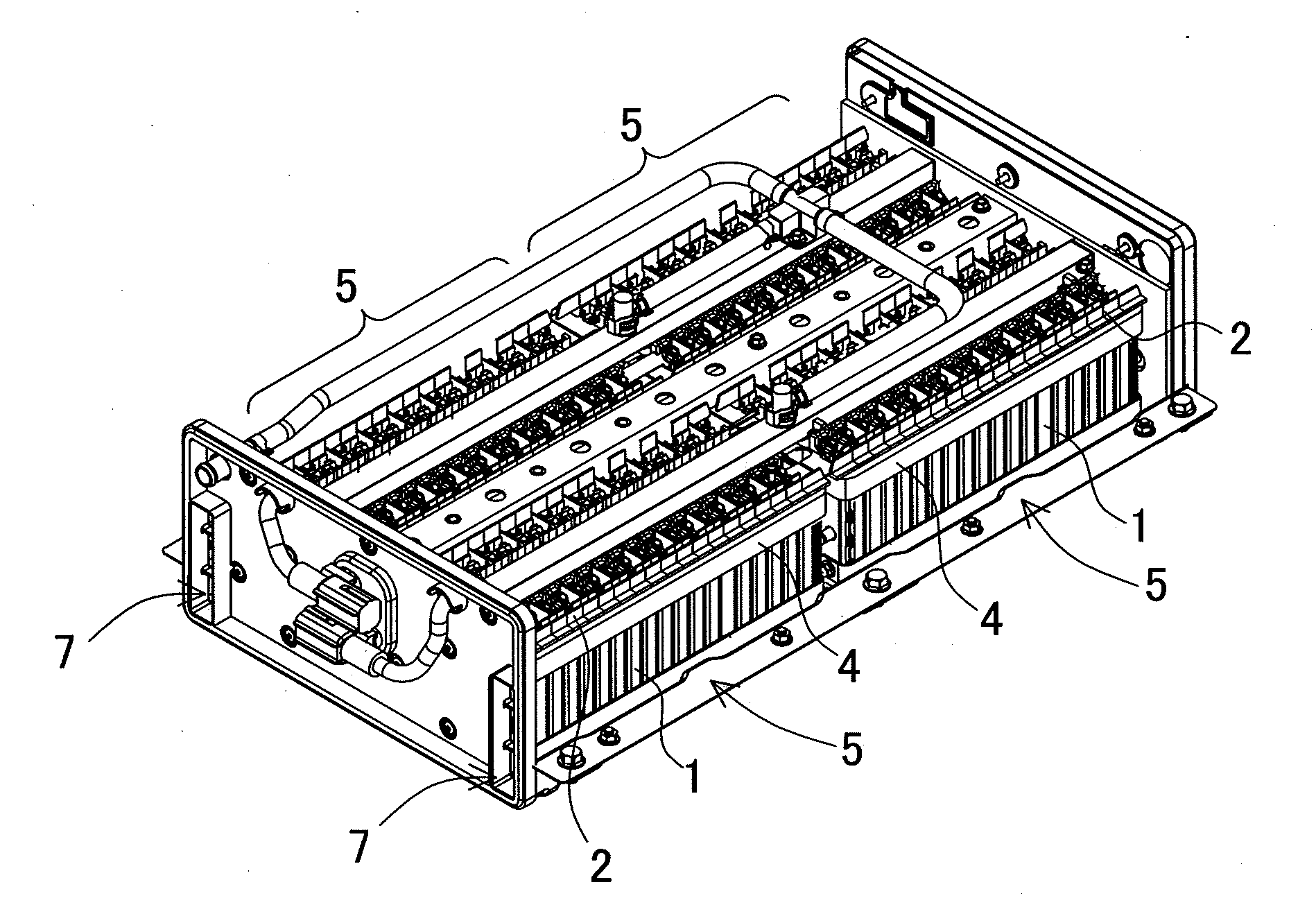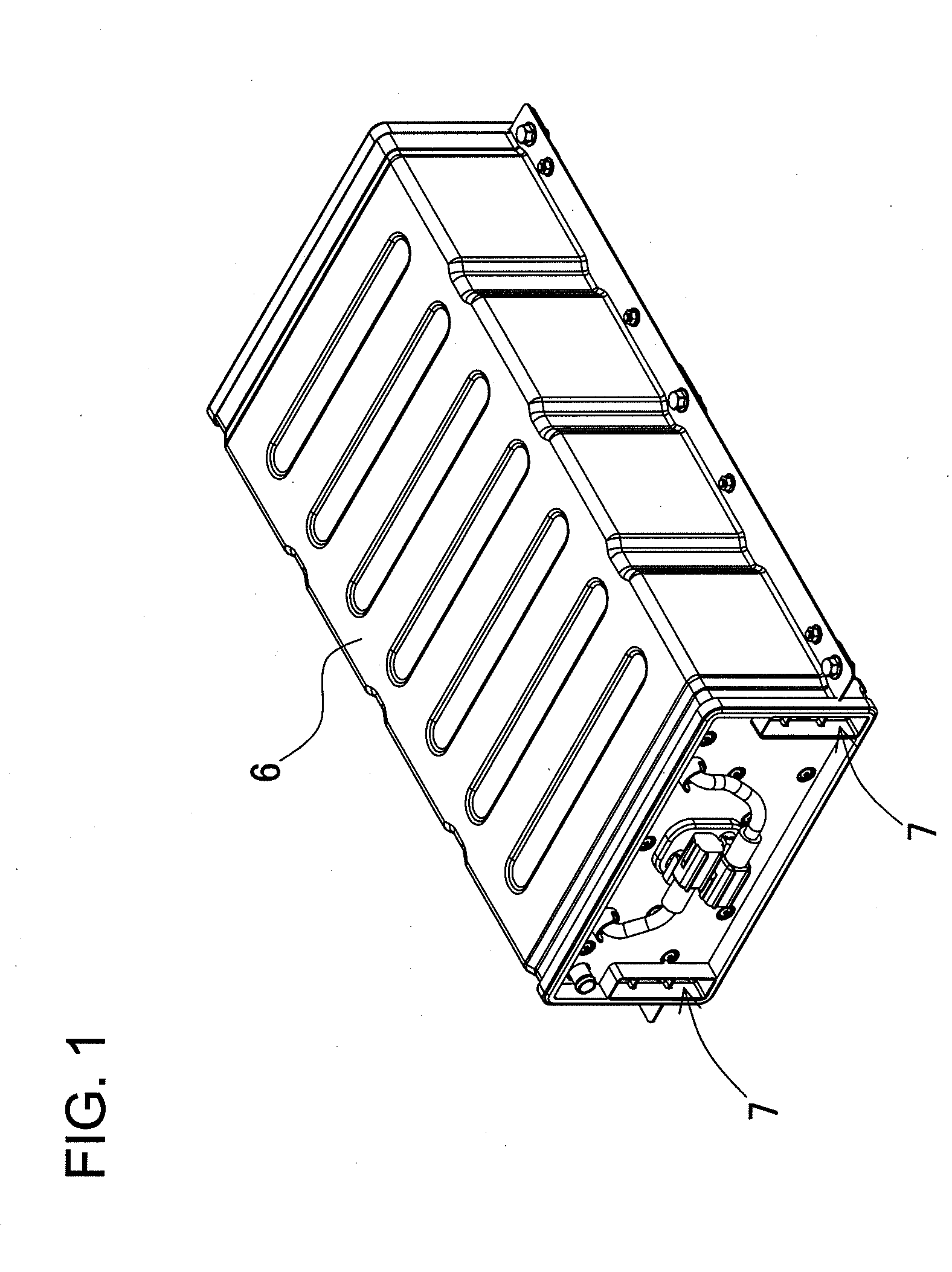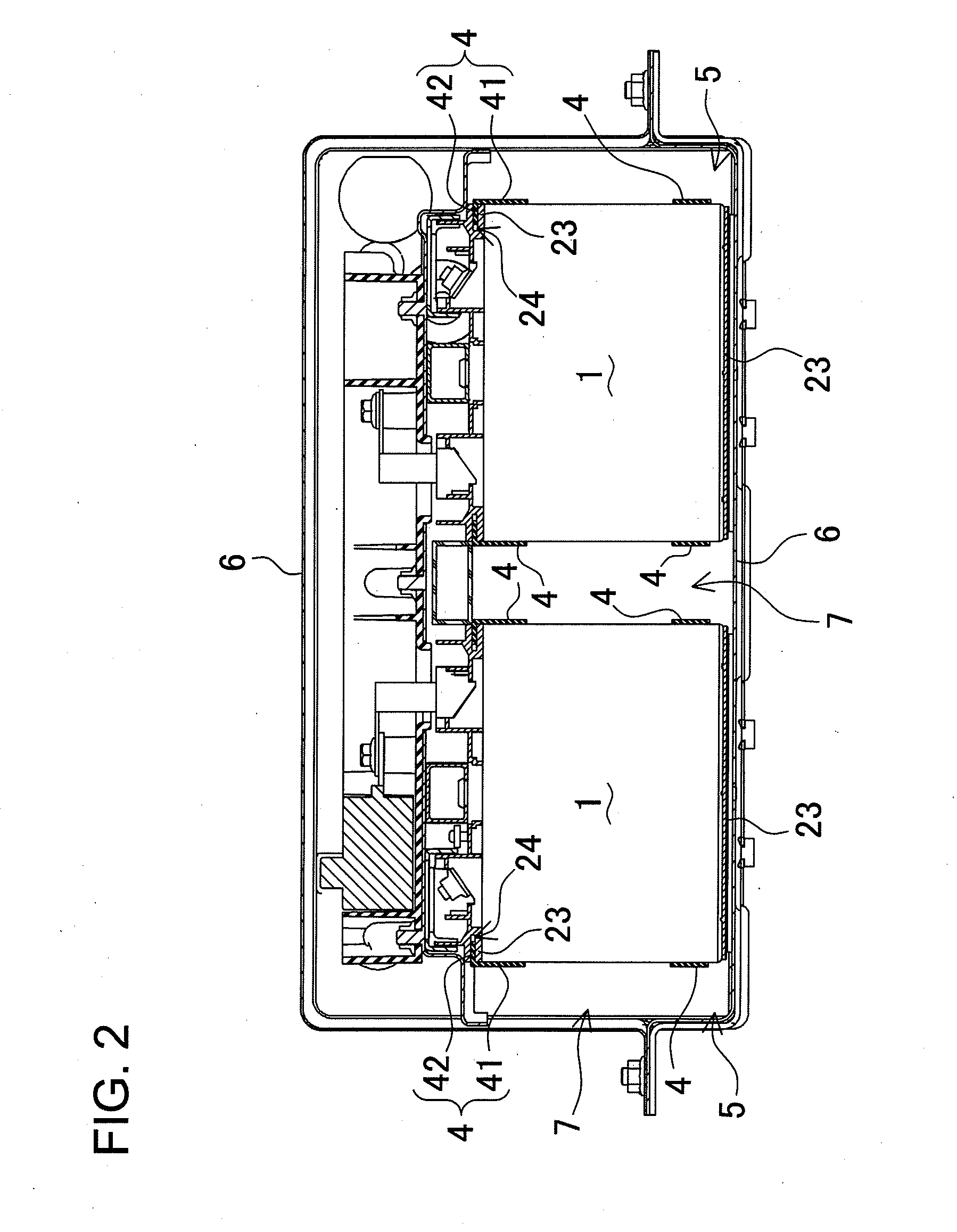Battery array configured to prevent vibration
a battery array and vibration prevention technology, applied in the field of battery arrays, can solve the problems of inability to reliably prevent various detrimental effects, and difficulty in reliably preventing up-and-down vibration of rectangular battery cells held between the binding bars, so as to achieve simple battery array assembly, prevent relative vibration between separators and binding bars, and prevent rectangular battery cell vibration
- Summary
- Abstract
- Description
- Claims
- Application Information
AI Technical Summary
Benefits of technology
Problems solved by technology
Method used
Image
Examples
Embodiment Construction
[0030]The following describes embodiments of the present invention based on the figures.
[0031]As an embodiment of the present invention, the following describes an example of battery arrays used in a power source apparatus installed on-board a vehicle to supply power to a motor that drives the vehicle. The following description is based on FIGS. 1-7.
[0032]Battery arrays are housed in an outer case 6 and installed as a power source apparatus in a vehicle. Cooling ducts 7 are established between the battery arrays and the outer case 6 to cool rectangular battery cells 1 in the battery arrays. Forced ventilation cools the rectangular battery cells 1 by introducing cooling gas into the cooling ducts 7 and between the separators 2 and rectangular battery cells 1.
[0033]As shown in FIGS. 4-6, a battery array is made up of a battery stack 5 having of a plurality of rectangular battery cells 1 stacked together with intervening separators 2. Separators 2 act as spacers that form cooling gaps ...
PUM
 Login to View More
Login to View More Abstract
Description
Claims
Application Information
 Login to View More
Login to View More - R&D
- Intellectual Property
- Life Sciences
- Materials
- Tech Scout
- Unparalleled Data Quality
- Higher Quality Content
- 60% Fewer Hallucinations
Browse by: Latest US Patents, China's latest patents, Technical Efficacy Thesaurus, Application Domain, Technology Topic, Popular Technical Reports.
© 2025 PatSnap. All rights reserved.Legal|Privacy policy|Modern Slavery Act Transparency Statement|Sitemap|About US| Contact US: help@patsnap.com



